Struggling to find a paddle brand that delivers on its promises? HEAD is a giant in racquet sports, but does their pickleball gear truly perform? Let’s find out.
Yes, HEAD pickleball paddles are very good, especially for beginners and intermediate players who prioritize control, comfort, and forgiveness. Models like the Radical series1 offer large sweet spots and exceptional grips, though they trade maximum power and spin for a softer, more consistent feel.
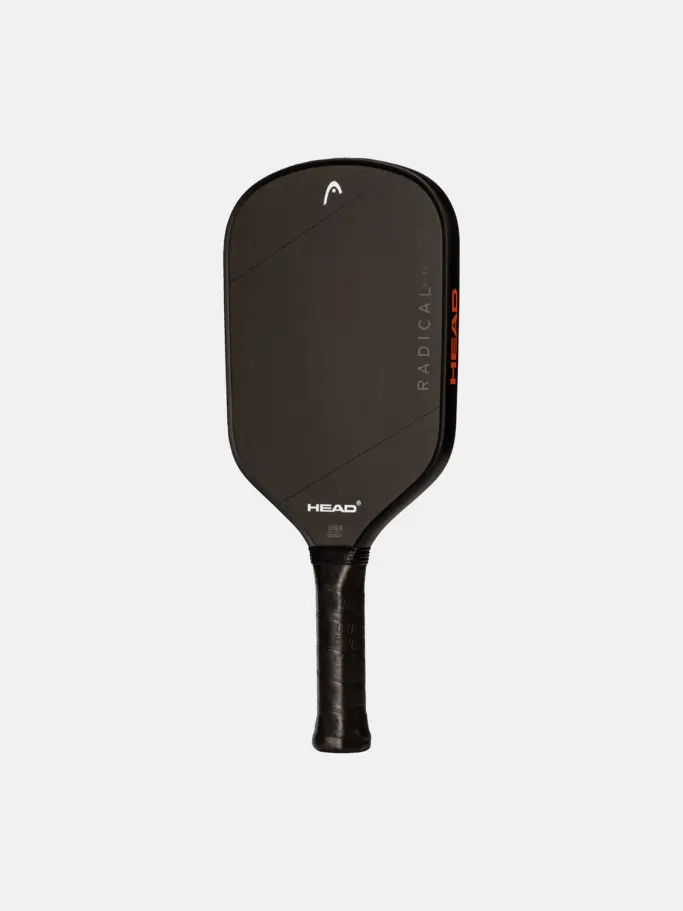
As someone who has spent years in the pickleball manufacturing world, I’ve seen countless brands come and go. Understanding a legacy brand like HEAD is crucial for anyone in this business. They don’t chase every trend; instead, they stick to a core philosophy rooted in their tennis DNA. This review will break down what that means for you, your customers, and your own brand strategy. Let’s dive into the details and see where HEAD truly fits in today’s competitive market.
HEAD was one of the first major tennis brands to enter the pickleball market.True
HEAD leveraged its extensive racquet sports R&D and manufacturing experience to become an early, significant player in the growing pickleball industry.
All HEAD pickleball paddles are designed for professional power players.False
While they have pro-level models, HEAD's core strength lies in paddles designed for control, comfort, and forgiveness, which are ideal for beginners and intermediates.
So, what’s the short answer: are HEAD paddles actually good?
You need a quick, honest verdict on HEAD paddles. Are they a smart buy for your customers or just a big name from tennis coasting in pickleball? Let’s cut to the chase.
Yes, they are very good for a specific player profile. If your customer values comfort, a forgiving feel, and consistent control over raw power, HEAD is a top choice. They are perfect for helping beginners and intermediates build confidence and skill.
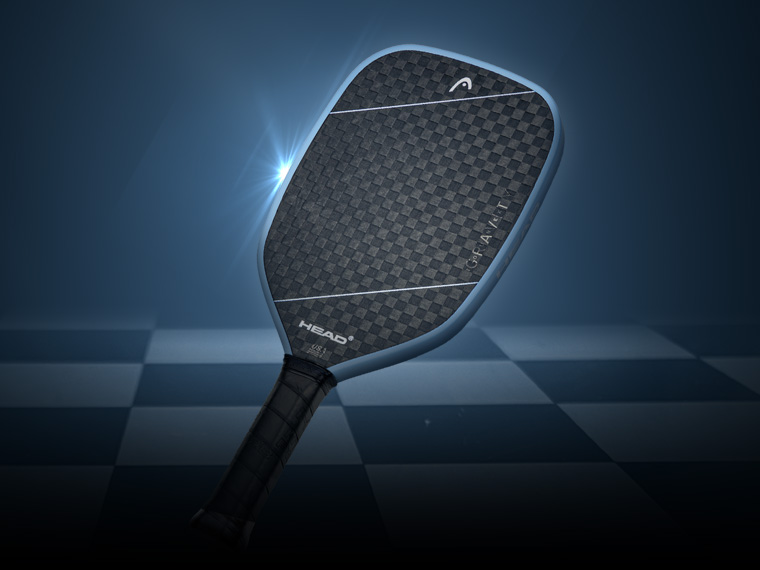
The Manufacturer’s Perspective on HEAD’s Philosophy
From my experience in paddle production, I can tell you that HEAD’s goal isn’t to win the spin RPM war that dominates the marketing of many new brands. Their R&D, which I’ve followed for years, is a direct extension of their tennis legacy. They focus on things like:
- Vibration Dampening2: Creating a comfortable feel that reduces arm fatigue.
- Handle Ergonomics3: Engineering grips that feel secure and comfortable for long matches.
- Optimized Sweet Spot4: Designing a large, stable hitting surface to minimize mishits.
This is why their paddles often feel "softer" and less "poppy" than thermoformed competitors. For a retailer or a new brand, this is a key insight. You’re not selling raw aggression; you’re selling confidence, consistency, and a more enjoyable playing experience. It’s the ideal paddle for the player who is tired of their ball flying long and wants to finally master the soft game.
HEAD's paddle technology focuses heavily on vibration dampening and comfort.True
Leveraging their tennis R&D, HEAD incorporates features like shock-dampening handles and optimized core materials to create a comfortable, arm-friendly feel.
HEAD paddles use the same materials as their tennis racquets.False
While they share R&D philosophies, pickleball paddles use different materials like polypropylene honeycomb cores and composite or carbon fiber faces, distinct from the graphite and string construction of tennis racquets.
How does HEAD compare to other brands on power and spin?
The market is flooded with raw carbon paddles promising insane spin. Where does HEAD fit in this landscape? Are they falling behind the technology curve, or playing a different game?
HEAD paddles deliberately prioritize comfort and control over maximum Power and spin5. While newer models have improved surface texture for more spin, they do not match the aggressive performance of leading raw T700 carbon fiber, thermoformed paddles.
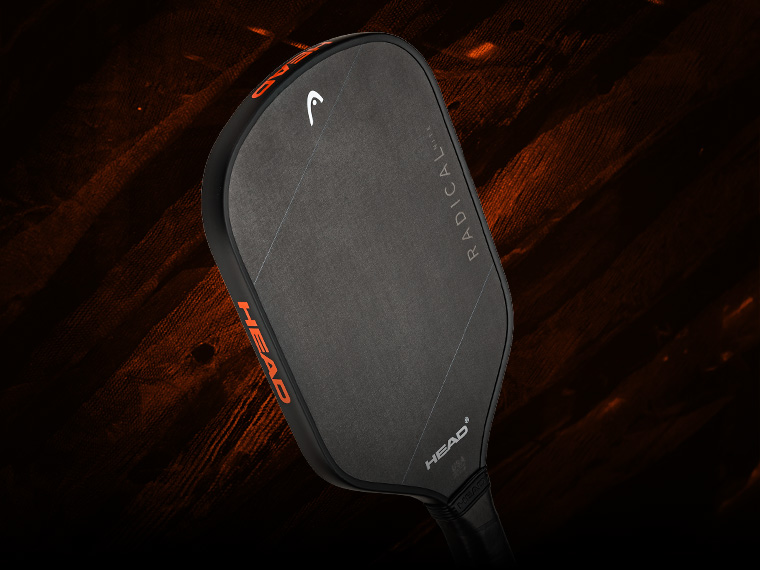
A Deliberate Trade-Off: Control vs. Raw Power
The hottest trend in paddle manufacturing right now is thermoforming combined with raw T700 carbon fiber faces. These paddles are stiff, loud, and can generate incredible spin and power. I’ve seen the production lines for these, and it’s a very different process. HEAD has chosen not to chase this trend exclusively. Instead, their popular Radical line uses a more traditional approach.
| Feature | HEAD Radical Series | Typical Raw Carbon Thermoformed Paddle |
|---|---|---|
| Feel | Soft, plush, quiet | Stiff, crisp, loud ("poppy") |
| Core | Polypropylene Honeycomb | Thermoformed Polypropylene Honeycomb |
| Face | Graphite / Composite with texture | Raw T700 Carbon Fiber |
| Player Benefit | Control, forgiveness, large sweet spot | Max power, max spin |
This "softer" construction gives the paddle more dwell time—the ball sinks into the face for a fraction longer. This is fantastic for control on dinks and drops, but it sacrifices the explosive "trampoline" effect that creates elite power. For your business, this means HEAD serves the anti-thermoformed market, a significant segment of players who find modern power paddles too hard to control.
HEAD's Radical Tour Grit offers significantly more spin than older, smooth-faced Radical models.True
The 'Grit' surface technology was a specific upgrade to add texture and improve spin generation, addressing a key weakness of their previous paddle generations.
HEAD paddles generate more spin than any raw T700 carbon fiber paddle.False
While improved, HEAD's spin technology does not reach the maximum spin RPMs achieved by paddles specifically designed with raw T700 carbon fiber faces.
What makes HEAD’s grip technology a standout feature?
A paddle’s handle is often an afterthought for buyers, but it’s critical for performance. HEAD claims their grip is special, but is it just marketing hype or a real competitive advantage?
HEAD’s HydroSorb-style grips6 are a genuine advantage. Independent reviews and player feedback consistently rate them near the top of their class for comfort, tackiness, and sweat resistance. This directly impacts player performance and confidence during long matches.
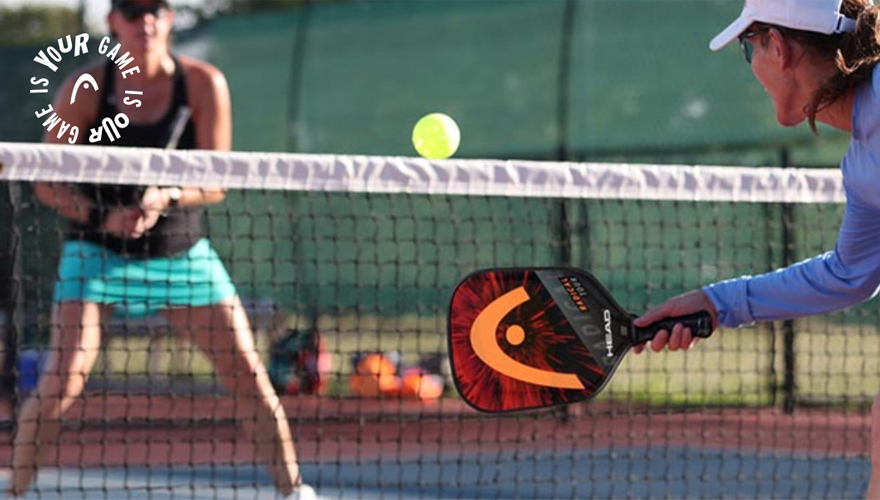
Why a Premium Grip is a Smart Business Decision
In my factory days, I saw firsthand how grips were often a place for cost-cutting. A company would invest heavily in the core and face, then wrap the handle in a cheap, generic grip. HEAD does the opposite. They leverage decades of tennis R&D to create grips like the HydroSorb Pro, and it shows.
Here’s why it matters from a product design standpoint:
- Comfort & Confidence: A tacky, cushioned grip reduces the need to squeeze the handle tightly. This relaxes the player’s arm, leading to smoother swings and less fatigue.
- Sweat Management: In hot weather or during intense matches, a sweaty grip can lead to disastrous mishits. The moisture-wicking properties of HEAD’s grips maintain tackiness and control.
- Out-of-the-Box Value: Many serious players immediately replace a stock grip with a premium overgrip. With HEAD, that’s often not necessary. One review from Pickleheads scored the grip a 9.5/10, a testament to its quality.
For a brand or retailer, offering a premium grip is a huge value-add. It’s a feature that players feel immediately and appreciate every single time they step on the court.
The HEAD HydroSorb grip is praised for its sweat resistance.True
Reviews consistently highlight the grip's ability to maintain tackiness and a secure feel even during play in hot and humid conditions.
You must replace the stock grip on a HEAD paddle immediately.False
Unlike many paddles in its price range, the stock HEAD grip is considered a premium feature and is often preferred by players without needing an immediate replacement or overgrip.
Is a HEAD paddle the right choice for every player?
No single paddle is perfect for everyone. So, who is the ideal customer for a HEAD paddle? And who should you, as a retailer or brand consultant, steer towards a different option?
You should recommend HEAD to Tennis converts7, beginners, early intermediates, and control-oriented doubles players. Players seeking maximum power for drives or heavy topspin for dipping shots will likely find raw carbon fiber paddles a better fit.
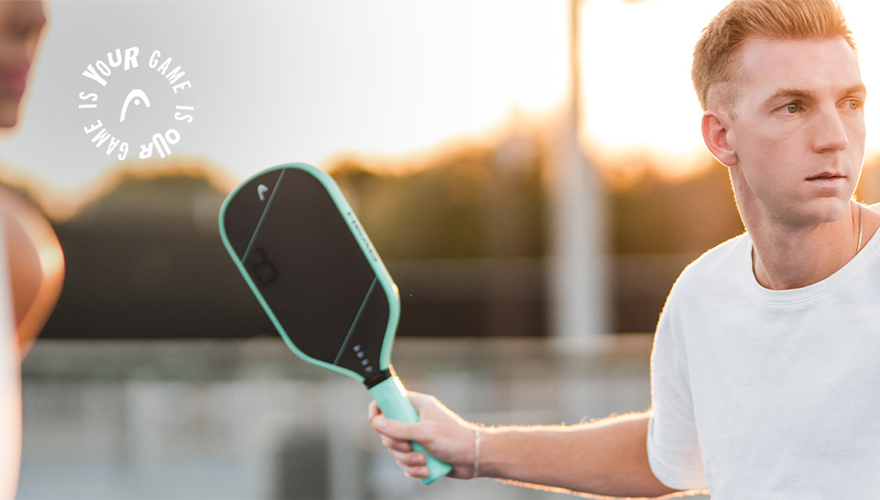
Defining the HEAD Player Profile
When I advise clients on developing a paddle line, we spend a lot of time defining the target customer. If we were to build a profile for the ideal HEAD player, it would look like this:
Who Should Pick HEAD:
- The Control-First Player: This player wins points with strategy, not brute force. They rely on precise dinks, accurate drops, and quick hands at the net. The forgiving nature of a HEAD paddle supports this style perfectly.
- The Developing Player: Beginners and early intermediates benefit immensely from the large sweet spot and soft feel, which reduces mishits and builds confidence faster.
- The Tennis Convert: Many players coming from tennis find the feel of a HEAD paddle very intuitive. The excellent grip, balanced weight, and controlled response feel familiar and comfortable.
Who Should Look Elsewhere:
- The Power Hitter: If a player’s game is built around aggressive third-shot drives and powerful overhead put-aways, they will likely feel underwhelmed by a HEAD paddle’s power ceiling.
- The Spin Junkie: A player who relies on heavy topspin to make their shots dip aggressively will get more performance from a paddle with a raw T700 carbon fiber face.
HEAD paddles are a good choice for players transitioning from tennis.True
The comfortable grip, balanced feel, and focus on control make HEAD paddles feel intuitive and familiar to former tennis players.
HEAD paddles are the best option for professional singles players.False
While some pros use HEAD, many elite singles players gravitate towards paddles that offer maximum power and spin, often found in thermoformed raw carbon models from other brands.
How do you find the right HEAD paddle without overpaying?
Navigating HEAD’s product line can be tricky. With similar names across different model years, how do you ensure you or your customers are getting the best value and the right technology?
Focus on the model year and the stated face technology. The 2024 Radical Pro, for instance, offers great value around $120. Be cautious of heavily discounted older versions that may have outdated smooth faces, as they lack modern spin capabilities.
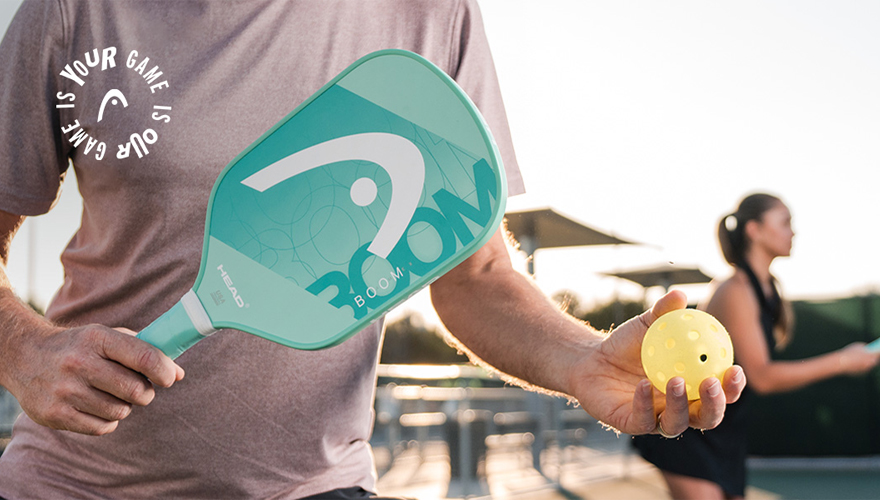
A Lesson in Product Line Management
As a retailer or brand owner, HEAD’s naming strategy is a critical case study. Using the same name (e.g., "Radical Pro") year after year can create inventory and customer confusion. An older model might be on clearance, but it won’t have the "SpinOn" or "Grit" surface of the newer ones.
Here’s how to navigate it and advise your customers:
| Model | Price (MSRP Ref.) | Key Feature | Best For |
|---|---|---|---|
| Radical Pro (2024) | $119.95 | SpinOn Composite Face8 | Best value upgrade for control |
| Radical Tour Grit | ~$140-160 | Graphite + Carbon Grit Face | Intermediates wanting more spin |
| Older Radical Models | Varies (often <$100) | Smooth Composite Face | Budget beginners (use caution) |
My advice is to be crystal clear in your product listings. Specify the model year and the exact face technology. A customer might buy an old 2021 model thinking it’s a great deal, only to be disappointed by the lack of spin. The true value sweet spot is often the latest non-pro model, like the Radical Pro 2024, which delivers modern control features at a very competitive price.
The HEAD Radical Pro 2024 is priced at $119.95 MSRP.True
This price point makes it a strong value proposition, offering modern control-oriented features for under $120, according to retailer listings.
All versions of the HEAD Radical Pro have the same face technology.False
HEAD has updated the face technology over the years, moving from smoother surfaces to textured ones like 'SpinOn' to improve spin generation. The model year is critical.
Are there any durability or design issues to watch out for?
A paddle is an investment, and durability is a major concern for customers. There have been whispers in the community about HEAD’s edge guards in the past. What’s the real story today?
Early community feedback on forums mentioned some issues with edge guards separating on older models. However, user reports and my own observations suggest these problems have been largely addressed in newer production runs with redesigned guards.
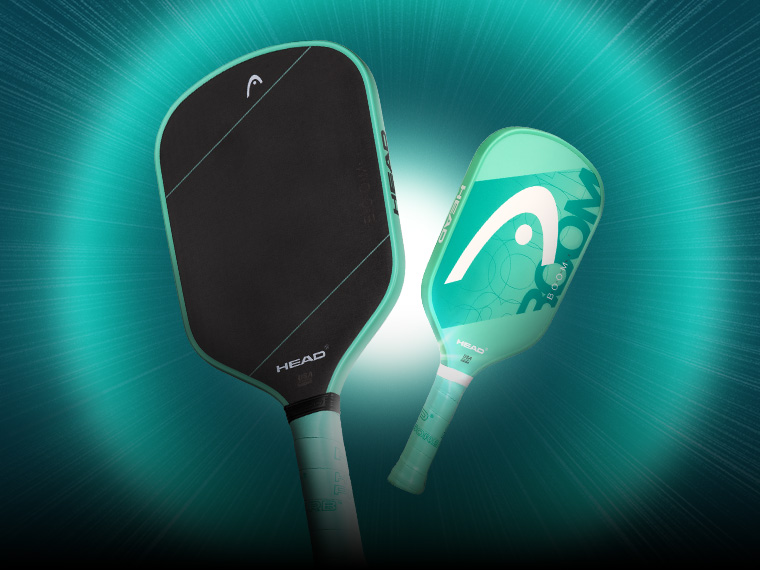
The Industry-Wide Challenge of Edge Guards
From a manufacturing standpoint, edge guard delamination is one of the most common warranty claims across the entire industry. Getting a perfect, durable bond that can withstand thousands of scrapes and impacts is a huge engineering challenge. I saw this firsthand in the factory.
Online forums, like a popular Reddit thread from a few years ago, contained reports from players who experienced this with older HEAD paddles. To their credit, it appears HEAD listened to this feedback. The edge guards on their more recent models feel more integrated and robust.
My advice for any brand owner or retailer is twofold:
- Listen to Your Community: Forums and reviews are invaluable sources of real-world feedback. Use them to identify potential product weaknesses and communicate with your manufacturer.
- Implement Quality Control: When you receive a shipment of paddles, have your team do a quick spot check. Gently press along the edge guard to check for any looseness. Catching a potential issue before it gets to a customer saves everyone a headache. For players, it’s always a good habit to inspect a new paddle upon arrival.
Some older HEAD paddles had reported issues with edge guard durability.True
Community forums and user reviews from several years ago contain reports of edge guards peeling or detaching on certain older models.
HEAD has never updated its edge guard design.False
Based on community feedback and observation of newer models, HEAD appears to have redesigned and improved the adhesion and durability of its edge guards in recent production runs.
Which HEAD paddle is best for different types of players?
Ready to choose a specific model for your store or for yourself? Let’s break down the current HEAD lineup and match the right paddle to the right player profile.
For control-focused intermediates, pick the Radical Tour Grit. For the best value under $120, choose the Radical Pro (2024). Tennis converts will appreciate the familiar feel and balance of any paddle in the Radical line.
Model-by-Model Recommendations
Choosing the right paddle is about matching the product’s strengths to the player’s needs. If a customer walks into your store, here’s a simple guide you can use to direct them to the right HEAD paddle.
-
Best for Early Intermediates Who Value Control: HEAD Radical Tour Grit
- Why: This paddle is incredibly forgiving. Its 7.9 oz weight is easy to maneuver at the net, and the large sweet spot means fewer frustrating mishits. The "Grit" face adds just enough spin to help a developing player shape their shots without the ball becoming uncontrollable. It’s a confidence-builder.
- Specs: 7.9 oz, 15 mm core, Graphite + Carbon Face, 5" handle.
-
Best Value Upgrade (<$120): HEAD Radical Pro (2024)
- Why: At its price point, the Radical Pro is a fantastic deal. It offers the stable, control-oriented 15 mm core and a modern "SpinOn" textured face. It’s the perfect, safe step-up for someone moving on from their basic starter set and wanting to invest in control and feel.
- Specs: ~8.1 oz, 15 mm core, Composite SpinOn Face, 5" handle.
-
Best for Tennis Converts: Any Radical Series Paddle
- Why: The entire Radical line shares a DNA that feels familiar to racquet sport players. The standard 5-inch handle length, ergonomic grip, and balanced weight distribution make the transition to pickleball feel natural and intuitive.
The HEAD Radical Tour Grit weighs 7.9 oz, making it a mid-weight paddle.True
This weight is light enough for quick hands at the net but still has enough mass to provide stability on blocks and drops, as confirmed by product specs.
The HEAD Radical Pro is the most expensive paddle in HEAD's lineup.False
The Radical Pro is positioned as a high-value, mid-priced paddle. HEAD's pro-signature models, like those in the Gravity series, are typically priced higher.
What if you need more power or spin than HEAD offers?
You’ve analyzed the options and decided the HEAD profile isn’t the right fit. Your customer—or you—craves more pop on drives and wicked spin on serves. What paddle technologies should you look for?
If you need maximum spin and power, look for paddles featuring a raw T700 carbon fiber face, especially those that are thermoformed. Brands specializing in this technology will provide the aggressive, explosive feel that HEAD’s line generally avoids.

The Technology Behind Power and Spin
When a client comes to my company wanting to build a "power and spin" brand, I immediately point them to two key manufacturing processes: raw T700 carbon fiber and thermoforming.
- Raw T700 Carbon Fiber: Unlike a composite or graphite face with a spray-on grit, this material has a natural, woven texture. This sandpaper-like surface physically grabs the ball, creating the highest spin rates possible. It’s the undisputed king of spin technology right now.
- Thermoforming: This is a manufacturing process where the entire paddle is baked under heat and pressure. It fuses the core, face, and edge foam together into a single, unibody piece. This creates an incredibly stiff and stable paddle, which translates directly into a powerful, "poppy" response.
The resulting paddle feels completely different from a HEAD Radical. It’s louder, stiffer, and less forgiving on off-center hits. However, for an advanced player who can harness it, the ceiling for power and spin is significantly higher. Brands like Vatic Pro, Volair, Legacy, and many direct-to-consumer companies have built their entire identity around this technology.
Thermoformed, raw T700 carbon fiber paddles generally produce more power and spin than non-thermoformed composite paddles.True
The combination of the stiff, unibody construction from thermoforming and the high-friction raw carbon surface is the current industry standard for maximizing power and spin.
All carbon fiber paddles are thermoformed.False
Many paddles use carbon fiber faces but are not thermoformed. Thermoforming is a specific manufacturing process that creates a unibody feel and adds significant power and stiffness.
Conclusion
HEAD paddles are an excellent choice for control, comfort, and forgiveness. They are perfect for developing players but may lack the elite power and spin that advanced competitors often seek.
References
-
Explore the unique features of the Radical series paddles that cater to control and comfort for players. ↩
-
Learn how vibration dampening enhances comfort and reduces fatigue during play. ↩
-
Discover how ergonomic handles can improve grip and performance for players. ↩
-
Understand how a larger sweet spot can enhance player confidence and reduce mishits. ↩
-
Discover the technologies that enhance power and spin for advanced players. ↩
-
Find out why HydroSorb grips are praised for comfort and performance during matches. ↩
-
Explore how HEAD paddles provide a familiar feel for players transitioning from tennis. ↩
-
Explore the benefits of SpinOn technology for improved spin and control. ↩





